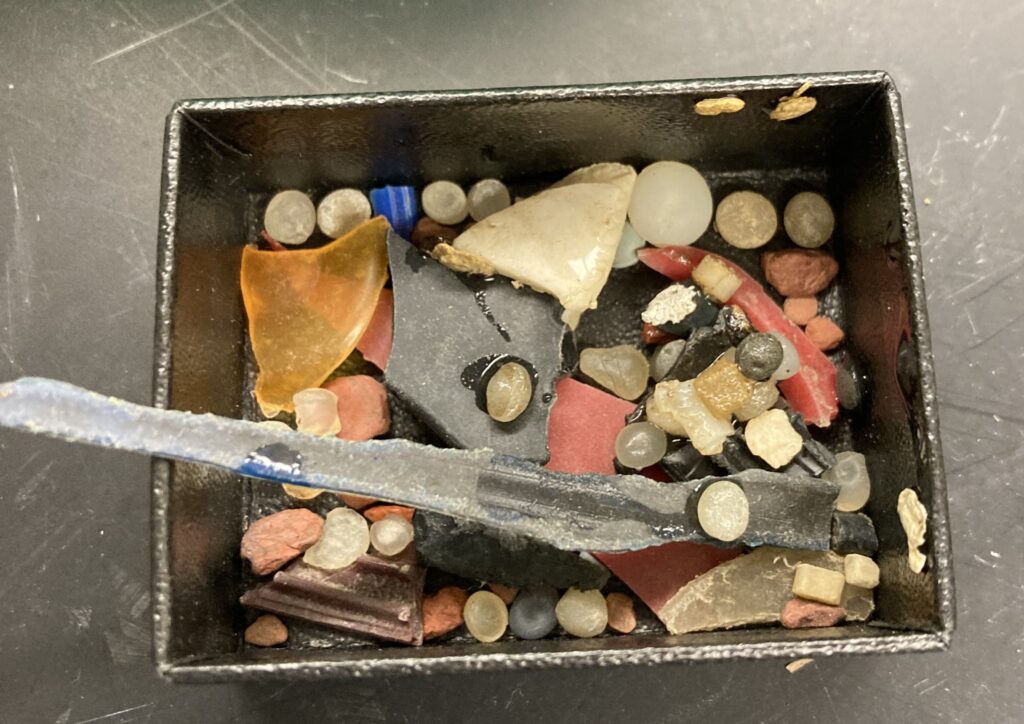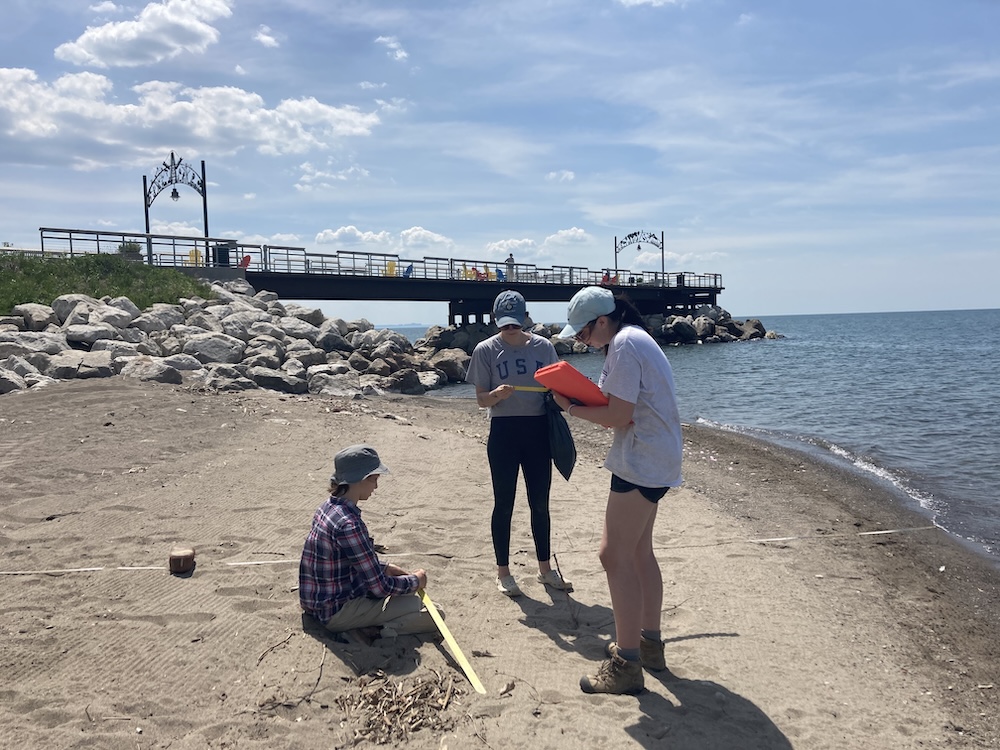New paper! Anthropogenic litter and plastics across size classes on a mechanically groomed Great Lakes urban beach
Plastic pollution is everywhere we look, and Great Lakes beaches are no exception. In this paper – featuring the work of four undergraduate researchers – we took a detailed look at plastic and other litter on a popular Cleveland (Ohio) beach. We wanted to know how much plastic was on the beach and whether it varied by size, over the summer, or with position on the beach. We also wanted to know if all of the effort the park put into litter patrols and mechanical grooming had any effect on the plastic pollution. The paper is open access in the Journal of Great Lakes Research, so you can read it to get all the details, but here are the top 5 highlights:
- Euclid Beach is number 4 in the Great Lakes for microplastics (<5 mm), even though we didn’t go as small as other studies. The number 1 culprit is plastic production pellets, the raw materials that get turned into our everyday plastic items. Euclid Beach is also number 3 in the Great Lakes for mesoplastics (5-25 mm).
- Beach grooming does appear to suppress the amount of macroplastic (>25 mm), but we still see more litter in heavier usage areas and periods.
- There’s a lot of foamed plastic (styrofoam) in the sand. We have questions about where it is coming from and how beach maintenance affects it.
- Beach-goers often get blamed for litter problems, but they don’t bring pellets to the beach or wash in debris during combined sewer overflows. This matters, especially because of larger concerns about environmental justice in this community.
- We need to do a better job of including urban and mechanically groomed beaches in larger scale studies of shoreline plastic pollution.
Jefferson, A.J., Kearns, K., Snyder, K., Mitchell, A., Muratori, S., Rowan, C.J. (2025). Anthropogenic litter and plastics across size classes on a mechanically groomed Great Lakes urban beach. Journal of Great Lakes Research, 51(2): 102505, doi: 10.1016/j.jglr.2024.102505. (open access)


With this paper out in the world, I’m excited to see what we will find in Lake Champlain in summer 2025 as the focus of Watershed Lab MS student Nurjahan Begum’s research.
